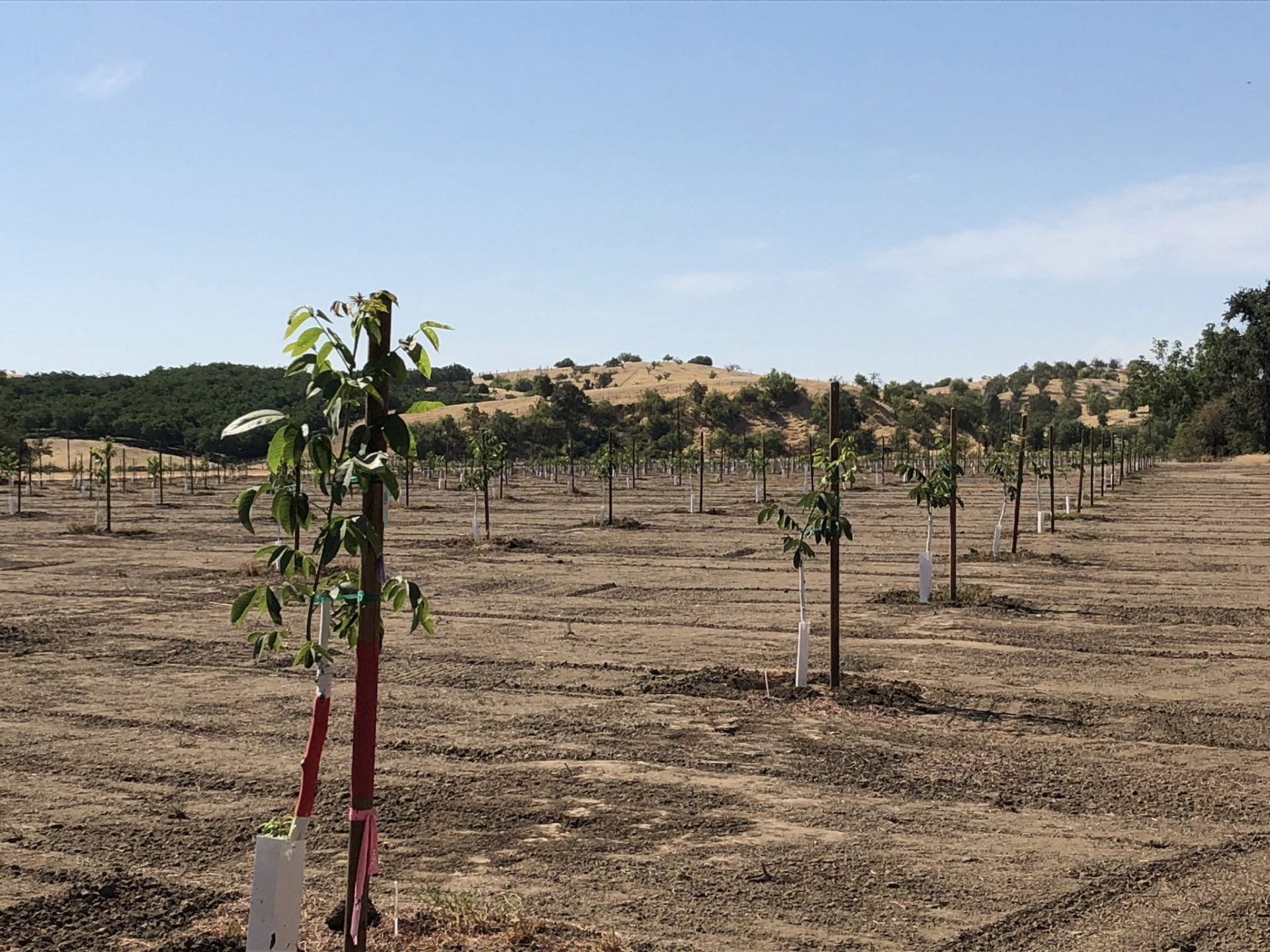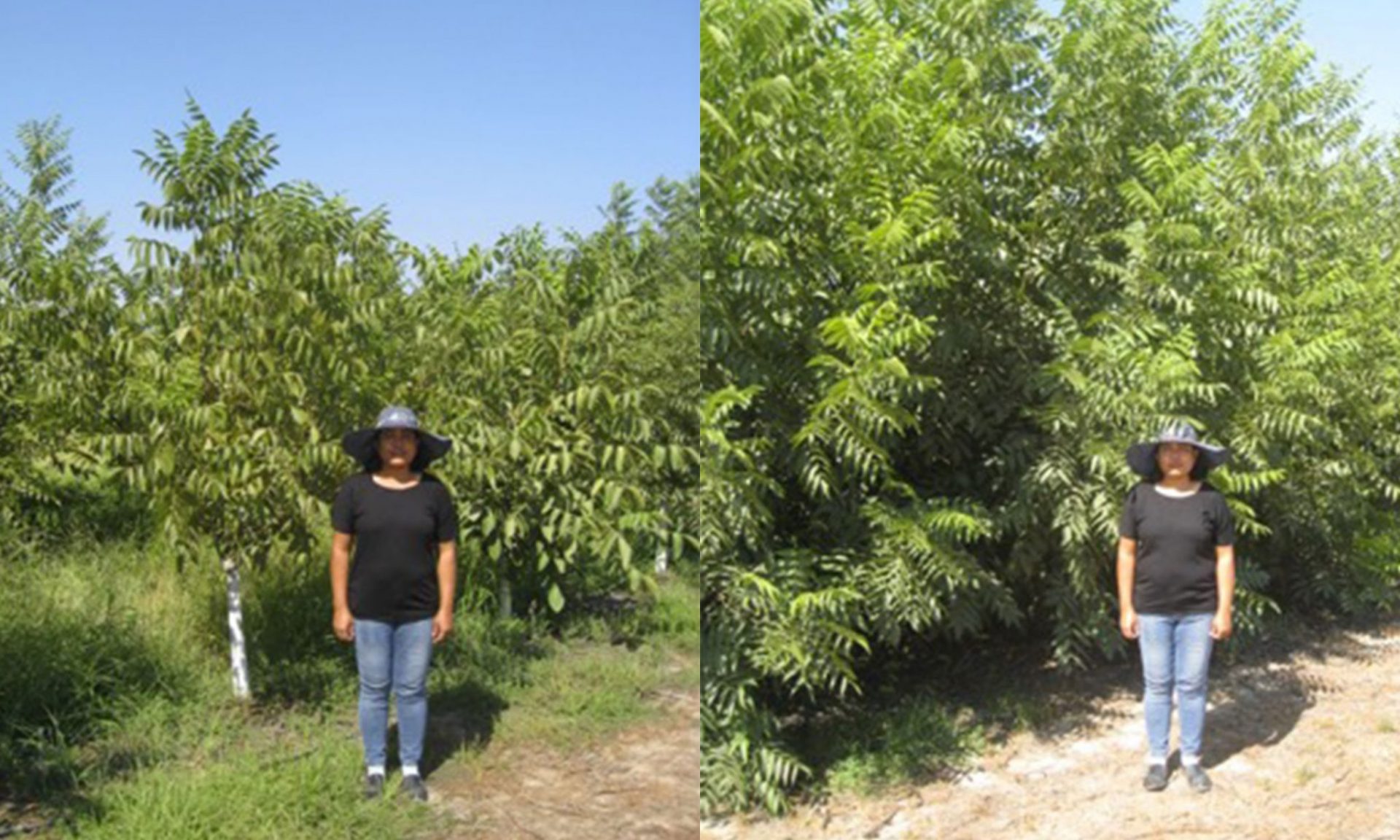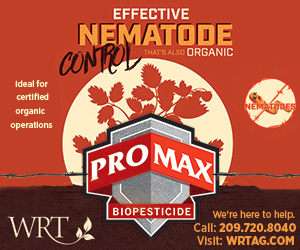
Given widespread nematode infestations of walnut orchards and limited control options, steps taken pre-plant are vital to the long-term success of an orchard, according to UC Riverside Nematology Specialist Andreas Westphal.
Westphal said proper soil sampling, proper use of chemical treatments and good rootstock selection often are the most important steps a grower can take to ensure a walnut orchard gets off to a good start.
Several nematode species are problematic in California walnut production, Westphal said, including first and foremost the walnut root lesion nematode. In previous discussions, Westphal has stated that approximately 85% of California walnut orchards are believed to be infested with the lesion nematode.
The ring nematode and the root-knot nematode are also damaging, and all three species can cause problems on English walnut trees grafted onto Paradox rootstock, which make up the majority of California walnuts.
Nematodes, which are microscopic round worms, feed on roots and other plant tissue and need a host plant to survive in soil, Westphal said. Stunted growth and sapped vigor are the most prominent symptoms of nematode infections.
Nematode damage crops through direct feeding by transmitting viruses and increasing a plant’s susceptibility to other pests and diseases.
Newly planted trees are particularly susceptible to nematode feeding, Westphal said, but even mature trees show a lack of vigor, poor growth and reduced yield when nematode numbers are high.
Sampling and Rootstock Selection
When sampling for the pathogens, Westphal said it is important to be mindful of the field that is being sampled. “In an orchard renewal situation, it is a great idea to sample the old crop before it is removed,” he said. “This allows for preferential sampling in the root zone underneath the canopy rim where young roots provide the most conducive feeding sites for these plant parasites.”
During extended fallow periods, nematode numbers decline, he said. “So, if a field has been fallow over the summer, and the soil dried out quickly in the summer heat, sampling needs to be deeper,” he said. Westphal said he frequently finds high nematode population densities at a depth of five feet. (For more information watch this video on the UC IPM YouTube channel.)
According to the UC Statewide IPM Program website, it also is important to stratify a field into sampling blocks that are representative of cropping history or soil texture. Westphal added that it is a good idea to work with a diagnostician to learn how they extract and identify the nematode species present in samples, which can help in management decisions and rootstock selection.
When nematodes are detected in soil or if a site has a history of nematode infestations, researchers note that it is important to choose appropriate rootstocks. The UC IPM website advises using clonal Paradox VX211 rootstock where root lesion nematodes are present.
“This rootstock gets infected by these nematodes,” Westphal said, “but tolerates their damage.”
In a three-year-old rootstock trial walnut canopies planted to nematode tolerant rootstock were two-and-a-half-times larger than those of adjacent trees planted to nematode susceptible rootstock. The trial site was heavily infested with nematodes.
Westphal added that trials are underway where the same stocks are grafted to the common Chandler variety in various locations of the state.
Westphal is co-leading the rootstock-development work with Dan Kluepfel, research leader for the USDA Agriculture Research Service Crop Pathology and Genetics Research unit in Davis. The team of breeders, plant pathologists, geneticists, engineers and economists from different UC campuses, USDA ARS and the California State University system obtained federal funding as well as support from the California Walnut Board.
“Developing new rootstocks is a lengthy process of selecting from diversity that breeders provide, and extensive testing before a novel rootstock can be released,” Westphal said. He added that he has identified “prime elites” that are now being forwarded towards release.
Cover Crop Suppressants
In addition to rootstock selection, Westphal is investigating other management strategies, including use of fumigation and non-fumigant nematicides and the use of cover crops.
Cover crops are being looked at for use in the non-walnut period of orchard ground to try to reduce population densities. It is known, Westphal added, that a true fallow, even for multiple years, will not be sufficient to push nematode population densities sustainably below threshold levels.
When using cover crops for nematode suppression within an existing orchard, Westphal said, it is important that the crop grows close to tree roots, which is where nematodes typically reside in soil. “In older orchards, depending on the irrigation system, this may be easier as roots are typically widely horizontally distributed,” he said. “In young orchards, this may be encroaching the spray strip along the tree row that growers like to keep vegetation free from.
“A lot of people don’t like cover crops that grow close to tree rows,” Westphal said, “but if you want to use cover crops as a nematode suppressant, you need to have a cover crop that overlaps with tree roots.”
Cover crops can provide several benefits to an orchard, Westphal added, including improved bulk density and increased secondary structure, which facilitates water infiltration and other physical benefits. “While first an investment, long-term, this can improve winter trafficability and water infiltration to capture more of the coveted winter rains,” Westphal said.
Nematode management is a complex endeavor, Westphal said, and several aspects need to be considered. “In orchard renewal, the process begins before the old orchard or crop is removed.”
“Vigilance at rootstock choice based on the information found is critical, and in many ways, sets the stage to productivity on the new orchard. Once in place, management options need to be geared toward the situation, and may not reach high levels of success in a short time period,” he said.

















